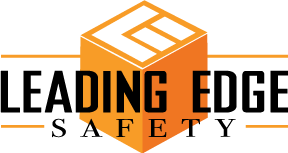Tips and best practices for safety professionals:
Managing leading edge safety on flat roofs, creating a culture of safety and how to conduct effective safety audits.
Safety is paramount in any workplace, and this is especially true for professionals tasked with overseeing and managing leading edge safety on flat roofs. A leading edge is any unprotected edge of a flat roof where a person could fall. The risks associated with leading edge safety are high, and it is essential that safety professionals take a proactive approach to creating a culture of safety and conducting effective safety audits. In this article, we will discuss some of the best practices for safety professionals tasked with overseeing and managing leading edge safety on flat roofs.
Creating a Culture of Safety:
Creating a culture of safety is one of the most important things that safety professionals can do to ensure the safety of workers on flat roofs. A culture of safety is an environment in which safety is the top priority, and everyone is committed to maintaining a safe workplace. Here are some tips on how to create a culture of safety:
1. Lead by Example: As a safety professional, it is essential to lead by example. You should always follow the safety protocols yourself, and make sure that everyone around you is doing the same.
2. Provide Adequate Training: One of the most important aspects of creating a culture of safety is providing adequate training to workers. This includes not only initial training but ongoing training as well. Workers should be trained on the hazards associated with leading edge safety, as well as the proper use of personal protective equipment (PPE) and fall protection systems.
3. Encourage Reporting: It is important to encourage workers to report any safety hazards or concerns that they may have. This can be done through regular safety meetings or by providing an anonymous reporting system. Workers should feel comfortable reporting any safety concerns without fear of retaliation.
4. Hold Regular Safety Meetings: Regular safety meetings are an excellent way to keep everyone on the same page when it comes to safety. Safety professionals should hold regular meetings to discuss any safety concerns or issues that have arisen, as well as to provide updates on any changes to safety protocols.
5. Recognize Safe Behavior: Safety professionals should recognize and reward workers who exhibit safe behavior. This can be done through verbal recognition, written commendations, or other forms of recognition.
Conducting Effective Safety Audits:
Another critical aspect of ensuring leading edge safety on flat roofs is conducting effective safety audits. Safety audits are an essential tool for identifying potential hazards and ensuring that safety protocols are being followed. Here are some tips for conducting effective safety audits:
1. Use a Checklist: Using a checklist is an effective way to ensure that all aspects of safety are being addressed during an audit. The checklist should include all of the safety protocols that are required for leading edge safety on flat roofs.
2. Conduct Random Audits: Safety professionals should conduct random audits to ensure that safety protocols are being followed at all times. Random audits can help to identify potential hazards that may have been missed during regular inspections.
3. Involve Workers: Workers should be involved in safety audits, as they can provide valuable feedback on potential hazards and safety protocols. Safety professionals should encourage workers to report any safety concerns or issues that they may have.
4. Follow Up: After an audit has been conducted, it is important to follow up on any identified hazards or issues. Safety professionals should work with workers to develop a plan to address any hazards and ensure that they are properly addressed.
5. Continuously Improve: Safety professionals should continuously look for ways to improve safety protocols and procedures. This can be done by conducting regular safety audits, soliciting feedback from workers, and staying up-to-date on the latest safety regulations and best practices.
Leading edge safety on flat roofs is a critical aspect of workplace safety, and safety professionals play a vital role in ensuring the safety of workers in this environment. By creating a culture of safety and conducting effective safety audits, safety professionals can help to prevent accidents

